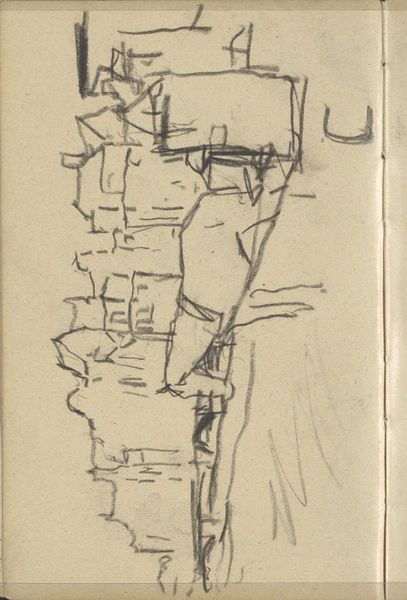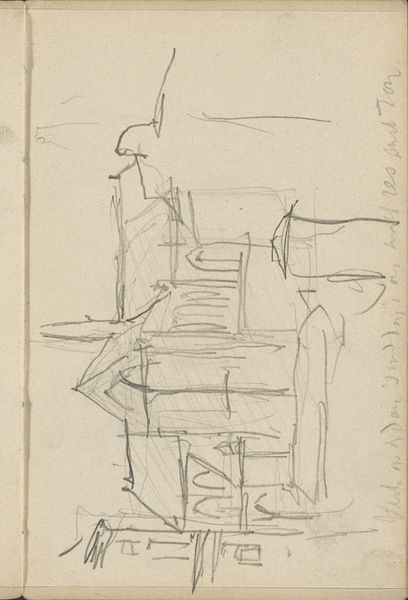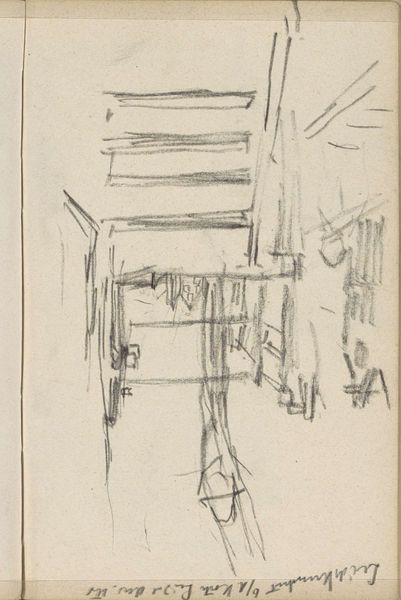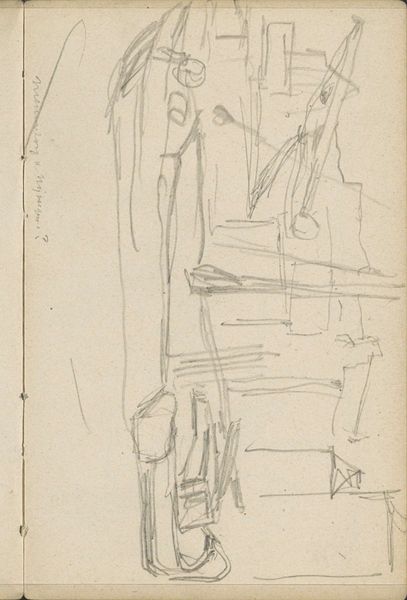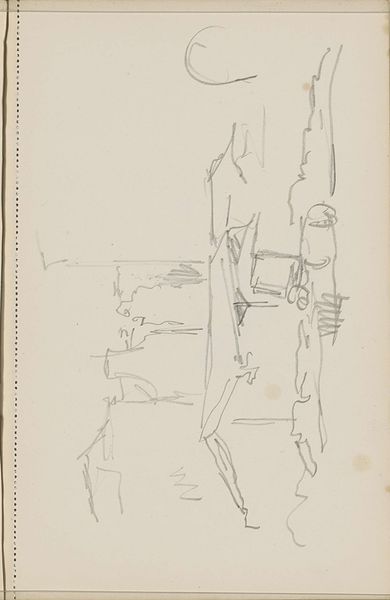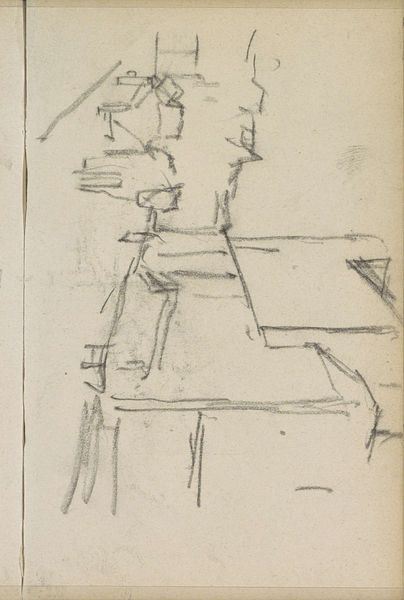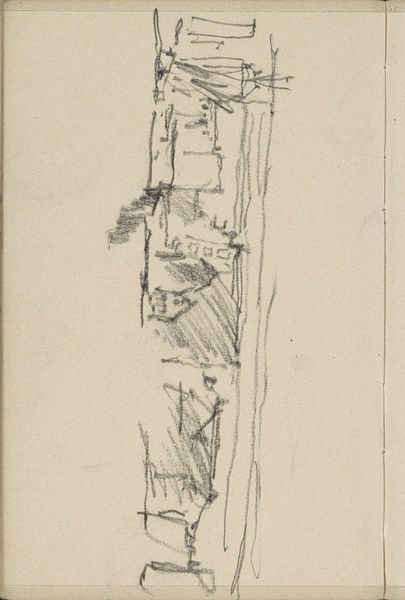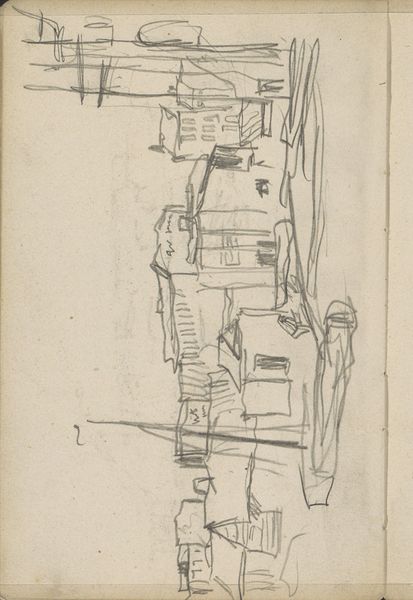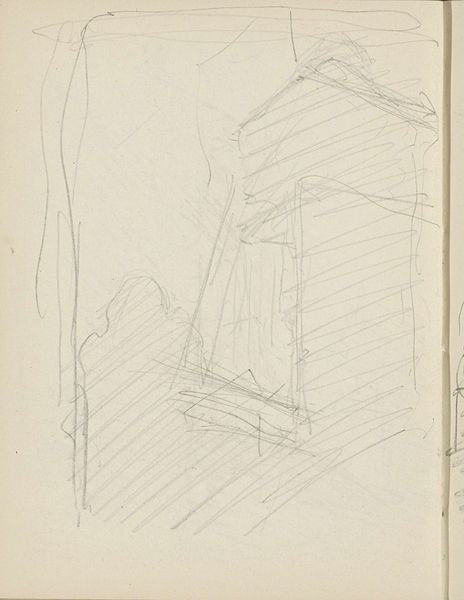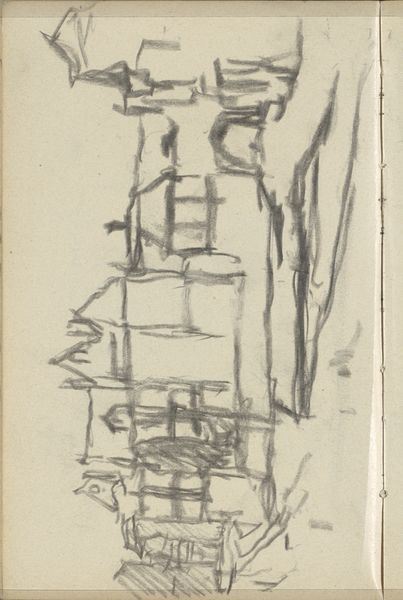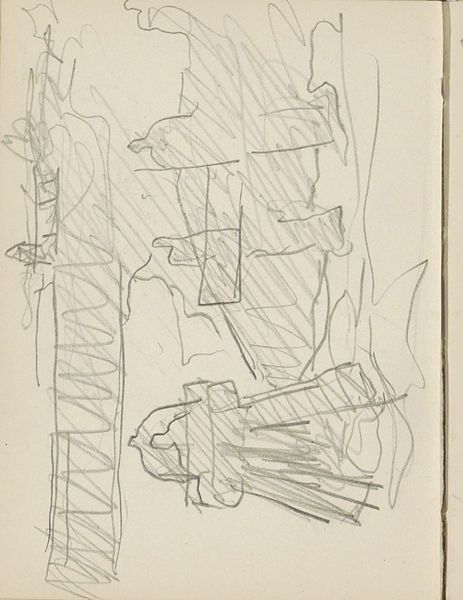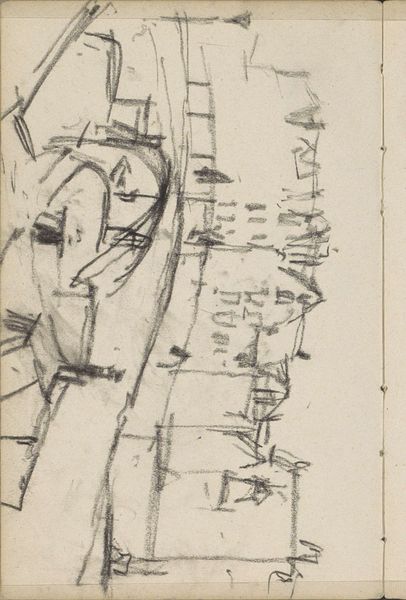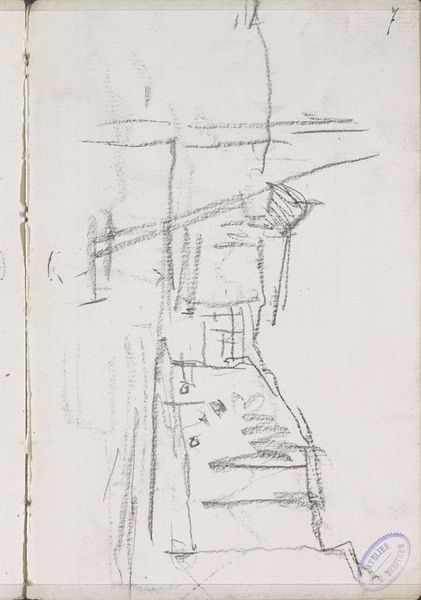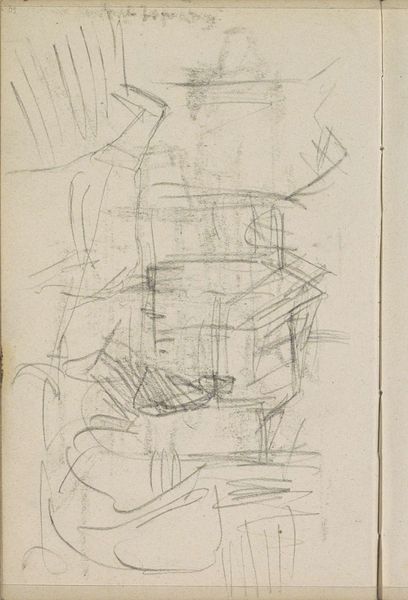
Copyright: Rijks Museum: Open Domain
Editor: This sketch, "Gezicht op schepen bij Prinseneiland te Amsterdam" from 1907 by George Hendrik Breitner, captures ships near Prinseneiland in Amsterdam with just pencil on toned paper. It's light and quick, giving it a feeling of immediacy. What do you see in this piece that maybe I'm missing? Curator: Beyond its impressionistic style, this drawing becomes a window into the early 20th century's urban experience. Amsterdam was changing, becoming a hub for global trade, yet the working-class neighborhoods near the harbors often bore the brunt of this expansion. Do you see how Breitner's choice to sketch rather than create a polished painting speaks to a kind of raw observation, an almost journalistic approach to his environment? Editor: That's interesting! I hadn't thought about the social context influencing his medium. It does seem very direct. Is he maybe suggesting something about the relationship between commerce and the everyday lives of people living near the docks? Curator: Precisely! And it also invites questions about whose stories get told and how. In focusing on a seemingly mundane scene, Breitner elevates the ordinary. It acknowledges the labor and the lives tied to these ships, implicitly challenging the art world's frequent focus on the wealthy and powerful. Consider also how this work exists today, housed in the Rijksmuseum. What does it mean to take a "personal sketchbook" piece, an “idea generation sketch,” and enshrine it within a national collection? Editor: Wow, that really reframes the way I see the drawing. It makes me wonder about all the other unseen narratives within art history. Thanks for your insight! Curator: Indeed. And consider, too, the accessibility of drawing. Here we see an artwork whose very form asks us to reconsider how artists and the stories of working people engage in visual dialogues across time and space.
Comments
No comments
Be the first to comment and join the conversation on the ultimate creative platform.
